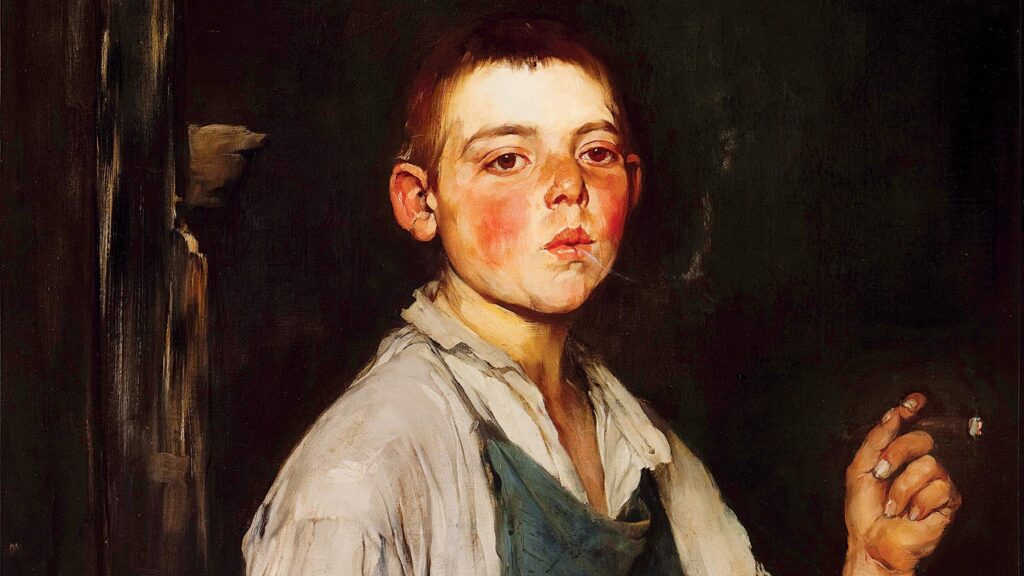Benn Pitman’s many talents extended into art. He introduced woodcarving courses at the School of Design, as well as china painting, which attracted many upper-crust society women.
The leading ceramic artists that made Cincinnati “the cradle of American art pottery” were also longtime rivals. Mary Louise McLaughlin and Maria Longworth Nichols Storer were more alike than not. Nichols was the daughter of Joseph Longworth, who had funded the School of Design.
Elizabeth Nourse and her twin sister, Adelaide, both began attending the School of Design in 1874 when they were 14 years old. Adelaide preferred the woodcarving courses and went on to marry the instructor, Benn Pitman, while Elizabeth studied everything she could. In 1887, accompanied by her older sister, Louise, Nourse went to Paris to study at the Académie Julian. After three months, she was told she needed no more instruction, but the art world was not so open to women artists, who often got married or became teachers.
Joseph Henry Sharp is noted as much for the subjects of his paintings as his skills with a brush. He made painting Native Americans his life’s work, putting hundreds of portraits to the canvas and portraying their quickly changing way of life.
Frank Duveneck left an indelible mark on American art. His vigorous brushwork and dark-toned realism liberated American painters. John Singer Sargent is said to have declared, “After all’s said, Frank Duveneck is the greatest talent of the brush of this generation.” Students of Duveneck are among the most important American artists of the late 19th century. Devoting the last decades of his life to teaching in Cincinnati may have caused his luminance to fade, but even today, Duveneck occupies the highest place among Cincinnati’s visual artists.
Clement J. Barnhorn managed to cultivate a national reputation while spending his career in his hometown. He enrolled in the School of Design in 1880, where he studied under Italian sculptor Louis T. Rebisso and woodcarver Henry L. Fry. Barnhorn went on to study drawing at the Académie Julian in Paris under William-Adolphe Bouguereau. Barnhorn’s sculptures were executed in stone, metal, or ceramic faience, as for Rookwood Pottery. His Magdalen received honorable mention at the Paris Salon, and bronze at the Paris Exposition. Barnhorn began teaching at the Art Academy in 1900 and served as head of the Academy’s sculpture department.










